Sauntering along Xa No Canal in Hau Giang Province
About 60 kilometers from Can Tho City, Vi Thanh Commune attracts travelers
to its canal along Xa No Park with its poetic surroundings. The park runs
along Tran Hung Dao Street, protecting visitors from the sun with its many
green trees. It is amazing to walk in the park under the moonlight to watch
the boats silently float on the canal. |
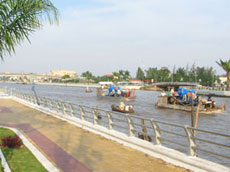 | |
|
For the Mong ethnic people, the traditional Tet (New Year
Festival) is considered the greatest and most sacred one in the year, which
includes several religious ceremonies. According to their belief, the Sun is
the supreme genie who brings about the light as well as life to humanity so
Tet is the festival to call the Sun Genie to come back.
|
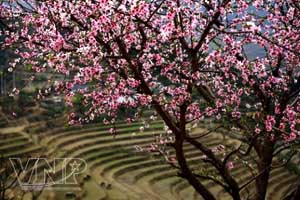 | |
|
My Son is within a valley in Quang Nam, around 69km southwest
of Da Nang city. From the 4th to 15th centuries, it was an imperial city
built by King Bhadravarman, and the centre for spirituality and worship
during the reign of the Kingdom of Champa. This is graphically illustrated
by the remains of a series of impressive tower-temples located at My Son.
|
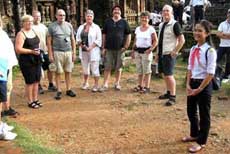 | |
|
A Vietnamese pastime on the occasion of Tet in spring is to
visit the gardens specializing in growing kumquat, apricot and peach trees
or to the Spring flower festivals to contemplate and buy flowers, twigs of
peach blossoms, apricots and kumquat trees to display in the house during
the festive time.
|
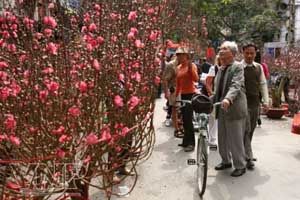 | |
|
In the old days when Confucianism prospered, old people liked
to hang the couplets on the walls in the house during Tet. At the year-end
markets in the rural areas there were several scholars who wrote scripts on
red paper and displayed them at their market stall. In the cities,
especially in Hanoi’s old quarter there are always scholars.
|
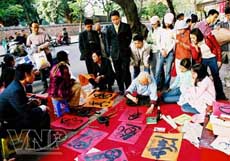 | |
|
Not far away is the modern architecture of Niet Ban Tinh Xa,
or Phat Nam Pagoda. This pagoda, built in 1969-1974 at Nho (Small) Mountain,
is considered the nicest in the city with its modern and elaborate design
and decorations. The first impression it makes on visitors is its two
statues of good and evil.
|
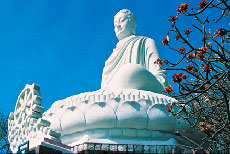 | |
|
Prenn Waterfall, or so-called Tien Sa Waterfall, about 10km
from Dalat City, is the first destination for everyone touring to Dalat. The
fall is about 10m high and is surrounded by a primeval forest. Under the
fall is a stream flowing along limitless pine tree lines and wild flowers
trees.
|
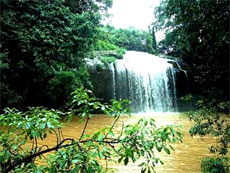 | |
|
Together with trading boats, there are smaller boats, each of
which supplies a specific service such as fast-food and drinks, haircuts,
tailoring, sewing, etc. Such a panoramic picture is interesting and full of
the local cultural imprint. Among the long-standing and famous floating
markets in the region.
|
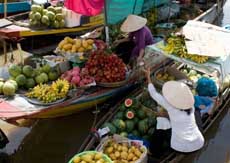 | |
|
The church started construction in 1928 and was completed in
1933 by a French Catholic priest named Louis Vallet (1846-1945). At that
time, the priest used 500 bombs to level the mountain. The church boasts
elegant Western décor and its architecture is a combination of ancient and
modern styles. All walls, roofs and pillars are cement.
|
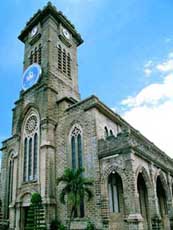 | |
|
It is interesting that the attire of Ao dai and turban is
common for both women and men. The Ao dai for woman usually clings tightly
to the wearer’s body with its flaps separated at the waist, while the Ao dai
for man always hangs loosely. The turban for woman is worn high on the head
while the turban for man is worn lower.
|
 | |
|
To people’s surprise, a relievo at the base of the piece was
the most skilful and special feature of the cage. The relievo was carved
with lively images of 12 animals together with fairies on a background of
mountains, houses, trees and flowers. It was so detailed, people could even
see the fairies’ beards.
|
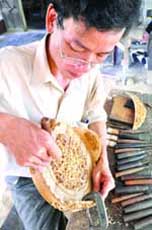 | |
|
From the main entrance, tourists can see a range of hills
from the Phuc Loc to Tham Thinh mountainous hamlets that resemble 99 dragons
worshipping the father land and protecting the temples. From the foot of the
mountain to the gate are about 225 stone steps to reach the Ha and Thien
Quang Tu temples.
|
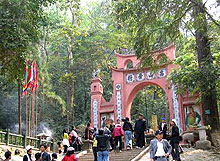 |
|
|
Vietnam Travel Guide
Vietnam Travel Guide | |
|
|